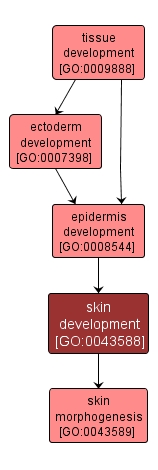| Desc: |
The process whose specific outcome is the progression of the skin over time, from its formation to the mature structure. The skin is the external membranous integument of an animal. In vertebrates the skin generally consists of two layers, an outer nonsensitive and nonvascular epidermis (cuticle or skarfskin) composed of cells which are constantly growing and multiplying in the deeper, and being thrown off in the superficial layers, as well as an inner vascular dermis (cutis, corium or true skin) composed mostly of connective tissue. |














